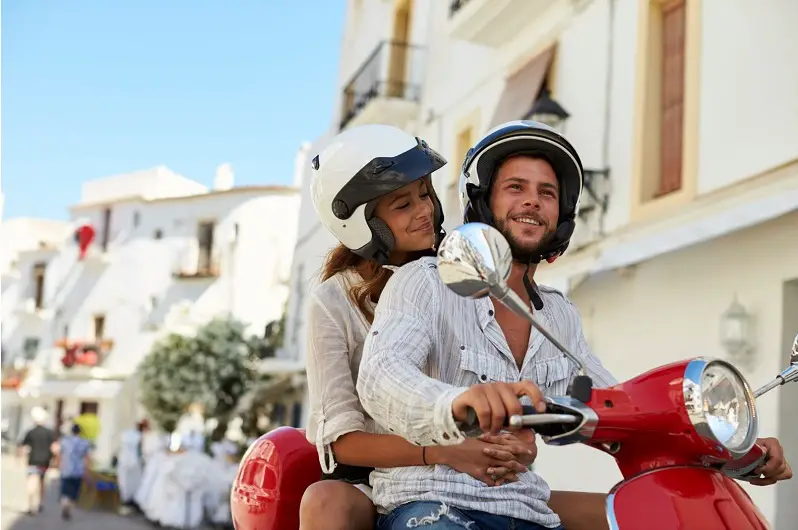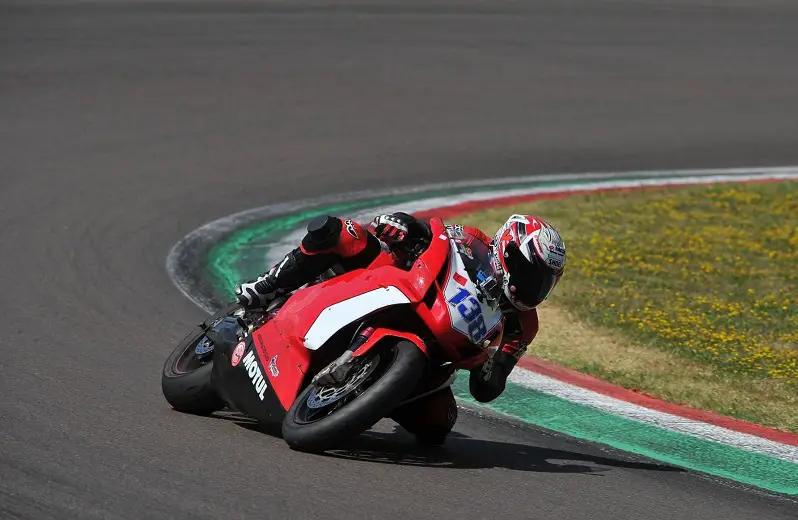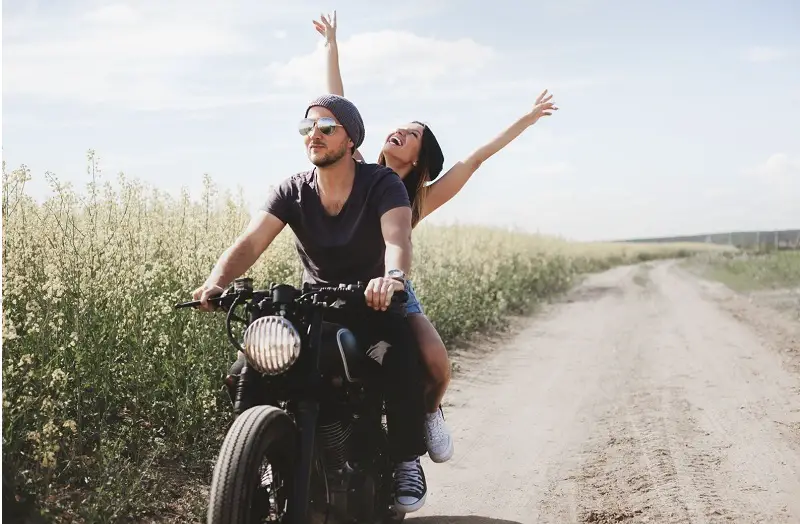If your first time as a passenger on the back of a motorcycle was anything like mine, it was quite a scary feeling. Especially when the bike leans over in a turn. Should you try to sit upright or lean with the bike?
A motorcycle passenger should maintain a neutral body position when the motorcycle leans into a turn. The passenger should not try to stay upright nor lean into the corner. Instead, stay aligned with the rider’s body and follow the natural motion of the motorcycle. It helps to look over the rider’s shoulder on the inside of the turn.
This can take some getting used to, but the more you understand what impact your position as a passenger will have on the stability of the motorcycle, the safer the ride will be.
Should a Motorcycle Passenger Lean in a Turn?
The short answer is No! A motorcycle rider (the driver) will be used to leaning the bike over just the right amount to get it around a bend safely. The faster the bike is travelling at, the more it has to lean over to make it around the corner. What the passenger does behind the rider may have a huge impact on the rider’s ability to control the motorcycle.
The passenger has one of two options:
- Become luggage: Yes, you heard me. Just hold onto the sissy bar or handle bars on the rear of the bike and don’t move. Follow the bike with your body without counteracting the lean nor leaning over into the corner. This will make it feel as if the rider is just carrying heavier luggage. The rider will be able to adjust his or her inputs and get used to the extra weight and inertia. Predictable is good! (This technique is perfect for someone that doesn’t want to hold onto the rider’s body – like two dudes… lol)
- Follow the rider: If you are not averse to holding onto the rider, grab a hold if his hips or around his waist and follow his spine with your body. Again, don’t lean into the corner but rather follow the riders body position. This may take some getting used to and there needs to be a trust relationship between rider and pillion. This is how my wife and I used to ride before she started riding her own bike. Don’t hang onto the riders shoulders or arms, as this may inhibit his ability to control the bike. If the passenger gets this right it will almost feel like there is no passenger behind the rider.

Why is it Important How a Bike Passenger Leans in a Turn?
To turn a motorcycle, the rider has to lean the bike over into the corner. The smaller radius of the tires’ outer edges is what makes a leaned over motorcycle turn. As a passenger that is not used to this sensation of leaning over in a turn, it can feel quite awkward or downright scary. It may even feel like the motorcycle is about to fall over and the natural reaction is to counteract this feeling of ‘falling over’.

Motorcycle riders are used to leaning over in turns and may even lean far enough to scrape a foot peg on the tarmac in a tight corner. This comes with experience and knowing how the bike reacts to specific inputs. Adding weight, like a passenger, to the bike will change the handling characteristics of the bike. To make matters worse, a passenger is not a static mass like a piece of luggage. It has a mind of its own!
If the rider needs to lean the bike over a specific amount to get it safely around a bend, the last thing he or she needs is a scared passenger leaning the other way, trying to stay perpendicular to the road. This will pull the bike into an upward position, effectively making it go straight ahead (instead of turning). This could send the bike into oncoming traffic or onto the shoulder, depending on the direction of the turn.
If the passenger, on the other hand, leans too far over with the lean of the bike, it may cause the bike to turn in too quickly or even lose grip and slide out from under you. Trust the rider and just stay neutral.
If it is your first time as a passenger with a specific rider, ask him or her what you should do in a corner. The more the rider can predict what you’ll do, the safer you’ll both be.
By staying close to the rider’s body, without putting any weight on him, the easier it will be to control the motorcycle. A good tip is to hold on to the bike or the rider’s lower body, and try to look over his shoulder. If you are turning right, look over the right shoulder. That way, your weight won’t upset the momentum of the bike while cornering.
Whatever you do, don’t move around mid-corner. If you have to readjust your position, do so on the straights or after warning the rider. Never touch the riders arms or shoulders, especially in a turn. He needs those to control the bike. And always keep both feet on the foot pegs, even when standing still at a robot.
Situations Where Motorcycle Passenger Behavior is Critical
It is always safer to sit still on the back of a motorcycle and only move around after warning the rider in control of the bike. If you have to move your body, do so while riding straight ahead, not mid-turn. There are two situations, however, when it is crucial that the passenger not surprise the rider with sudden movements.
- Slow riding: Motorcycles are more stable at speed due to its momentum. The slower you go, the more the rider has to depend on his ability to balance the bike. This means that a passenger has to be particularly careful when the bike is moving slowly (like when parking or riding through slow traffic). If the passenger suddenly shifts her weight while the rider is concentrating hard to keep the bike upright, a tumble is quite possible.
- Very fast cornering: Most motorcycles can lean over quite far before losing grip. The faster you go around a corner, the more you have to lean over the bike. The centrifugal force and lean of the bike needs to be perfectly balanced in order to keep the line through the turn. If this balance is upset (by a fidgeting passenger, for instance) the bike will go off the intended course. The faster you are going, the bigger the mistake.

The more aware a new passenger is of the road ahead, the better he or she will be able to react to changes in the bike’s lean angle. As the passenger and rider get used to each other, it becomes more natural and instinctive. After many years of riding together, I sometimes had to feel my wife’s leg with my hand to make sure she is still back there.
WARNING: Special Note on Sports Bikes
Sports bikes were not designed for two people. Yes, there may be a small little seat on the rear but the passenger is sitting way out behind the bike and there is little to hold on to. This is a very dangerous place to sit and it is absolutely critical that the passenger always hold onto the rider. Even a small slip of the clutch or a handful of throttle can throw you off the back.
As a passenger, never get onto a motorcycle without the necessary safety gear, including a helmet, gloves and boots at a minimum. A proper bike jacket is also a good idea.
Conclusion
While I don’t like to ride on the back of a motorcycle at all (I am way too much of a control freak), it can be fun for a lot of people. Being a passenger on a motorcycle carries with it a responsibility to keep both people safe. Speak to the rider if you are unsure how to sit or what to do in a corner. The more in tune the you are with the bike and the rider in front of you, the more fun you’ll have and the safer you’ll be (and feel).
Ride safe!
